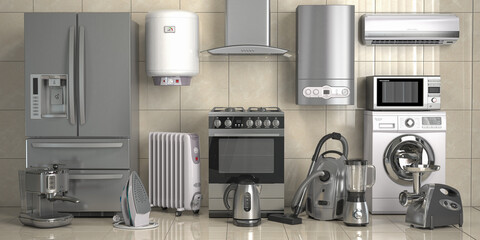Lawn Care refers to the recurring maintenance required for healthy turf. Like a person, a lawn needs a proper diet and regular exercise to stay healthy. Contact LTP Property Maintenance now!
Know your grass type. It’s essential to let it go dormant in the summer. Mow often but not so short that you remove more than one-third of the leaf blade each time (and spread or remove large clumps). Soil testing and lawn fertilization are important to build soil health.

A well-maintained lawn serves as a beautiful backdrop to your property. The lush greenery is a focal point that instantly elevates your home’s or business’s curb appeal and is a great first impression to guests and passersby. Professional lawn care services employ meticulous techniques that ensure every blade of grass is trimmed to perfection, resulting in an impeccable landscape.
Lawns also serve as a natural filter, absorbing dust and smoke particles from the air and releasing oxygen. Additionally, a healthy lawn contributes to the health of the surrounding environment by reducing erosion and absorbing carbon dioxide, promoting a healthier atmosphere.
Color, shape, and texture can affect the aesthetics of your lawn. Studies have shown that certain aesthetics can evoke a variety of emotions and affect your mood. For example, a brightly colored lawn can elicit positive feelings and increase energy levels.
Other important aspects of the lawn include the ability to protect your property from erosion and provide a natural space for wildlife. The roots of your grass intertwine with the soil, creating a strong bond that helps prevent soil from being washed away during heavy rains or blown away by windy conditions. A healthy lawn also improves the quality of your soil, allowing for better root growth and overall yard health.
Nicholas Quigley is an East Aurora area Lawn Love pro who specializes in elevating your lawn and curb appeal. His comprehensive lawn management services include mowing, aeration, seeding, and weed control, along with tree and shrub trimming. Using eco-friendly fertilizers and water-conserving irrigation techniques, Nicholas is committed to environmental sustainability while maximizing your yard’s health and beauty.
Health
Lawn care involves preserving, improving and enhancing the ground covering of residential and commercial properties. It differs from landscaping because lawn care looks inside the soil to ensure the turfgrass is getting all the nutrients it needs and assessing conditions like pH, compactness and composition. It also includes weed control, lawn mowing, chemical spraying and fertilizing. It doesn’t include planting trees, shrubs or flowers, although it may involve their maintenance.
A well-maintained lawn isn’t just about aesthetics; it has numerous health benefits for people and the environment as a whole. For example, grass produces oxygen through photosynthesis, which helps regulate the atmosphere’s temperature and humidity levels. In addition, a lush lawn acts as a natural filter by trapping dust and other airborne pollutants. Moreover, a study by the National Association of Landscape Professionals found that a well-maintained lawn increases home values by 10-15%.
Regular lawn treatment prevents insects and diseases from infiltrating the property. This includes fungicide treatments to prevent or control lawn diseases like brown spot, summer patch and grubs. Moreover, aeration services help improve soil health by relieving compaction and allowing water and nutrients to penetrate the roots more effectively. In addition, organic mulches suppress weed growth and promote a healthier, denser turfgrass.
The lawn care industry offers a variety of services that can be tailored to the specific needs and budget of each property. For example, some companies provide weed control treatment only in certain parts of the yard, while others treat the entire lawn. They also offer preventative insect control services to protect against common pests like caterpillars, aphids and beetles as well as more serious underground pests such as fire ants and wire worms.
Other lawn care services include mowing, edging and mulching. Mowing the lawn to the correct height encourages deep root growth, which makes the grass more resistant to stress and weeds. Fertilizing the lawn on a schedule and using slow-release products prevents nutrient runoff and environmental harm. Weeding and aeration are important to achieving a healthy, attractive turf. Finally, a lawn needs to be trimmed and edged to define its boundaries, eliminate unsightly overgrowth and maintain its shape.
Safety
Lawn Care is not just mowing and blowing; it’s about the health of your lawn and the overall look of your landscape. This includes aeration, seeding, fertilization, weed control and more.
Healthy landscaping adds curb appeal and increases property value. It also reduces allergens, promotes good air quality, and provides a safe place for outdoor activities.
Properly stored lawn and garden equipment is essential for safety. String trimmers and mowers must be properly stowed away when not in use to prevent accidental start-ups and to protect the blades from damage.
Enhanced lawn care standards help keep employees safe, which in turn lowers workers’ compensation claims and insurance premiums for the business. It also helps to reduce turnover and ensures the best possible job is done for each customer.
Uneven terrain and overgrown grass can pose tripping hazards for people and pets. Puddles and standing water can lead to slippery surfaces, while tall grass can harbor pests like mosquitoes that spread diseases.
Weeds can choke out the vitality of trees, plants and grass by competing for valuable nutrients, light and air. Regular weed removal is one of the most important services offered by professional lawn care companies.
A healthy and well-groomed lawn is a safe space for family gatherings, outdoor activities and children’s playtime. It also contributes to a positive impression on neighbors, guests and visitors to the home. A lush green lawn is a sign that the homeowner or property manager sets high standards for his or her landscape. A lawn that is regularly mowed and maintained also makes a great first impression on homebuyers looking to sell their property. Lawn care service providers can provide a variety of other services to enhance the beauty of your property, including edging and mulching. They can also help you with tree and shrub trimming, and with preventing and controlling erosion. They may even be able to recommend other contractors for hardscaping, pool maintenance, irrigation and more. The best landscapers will include these and other services as part of their comprehensive lawn care program. They will also be able to help you design your yard to maximize your potential for curb appeal and function.
Environment
Lawns provide a wide array of environmental benefits, from carbon sequestration to air quality improvement. They act as a natural filtration system, reducing pollutants and soil erosion. They also help to reduce water temperatures and contribute to groundwater recharge and soil retention. And while many people don’t think about it, lawns are a vital food source for pollinators like bees, which are essential to our ecosystems.
The dense grass root network of a healthy lawn helps to prevent soil erosion, which can damage the environment and contaminate nearby water bodies. A healthy lawn can also serve as a natural buffer, absorbing the impact of raindrops and keeping runoff from washing away nutrients and sediment into streams and rivers.
Because of their extensive coverage, healthy lawns also make good habitats for wildlife. They offer safe hiding places for frogs, fish and other small animals, as well as insects that serve as food for birds, bees and other animals. However, lawns must be properly maintained to avoid becoming a haven for pests that can harm humans, pets and livestock.
When a lawn is regularly cared for, it also improves the surrounding environment by reducing dust and other pollutants. They can even serve as a filter, trapping and breaking down chemical contaminants that might otherwise wash into streams, rivers and lakes.
Another important environmental benefit of lawns is their role in the production of oxygen. In fact, a single acre of healthy lawn can produce enough oxygen for five families of people. And a healthy lawn can even help to reduce the amount of carbon dioxide in the atmosphere.
One of the easiest ways to improve your lawn’s environmental footprint is by reducing mowing frequency and by avoiding bagging grass clippings. This “grasscycling” allows the clippings to decompose and recycle nutrients back into the soil, while minimizing fuel consumption and waste. Proper fertilization, following EPA guidelines, is another way to improve your lawn’s eco-friendliness. This reduces nutrient runoff and minimizes excess fertilizer pollution. In addition, weed control is an important part of environmentally sound lawn care.

